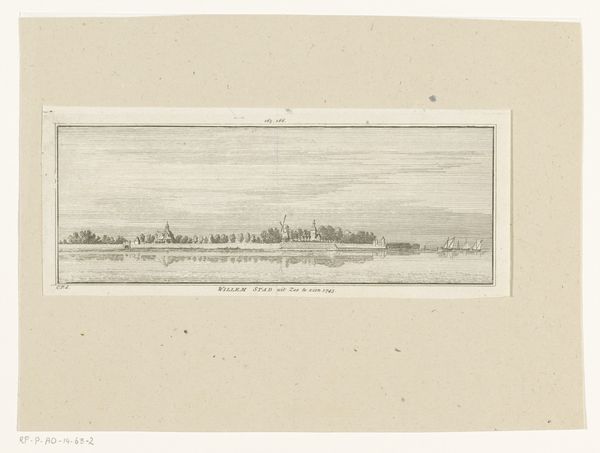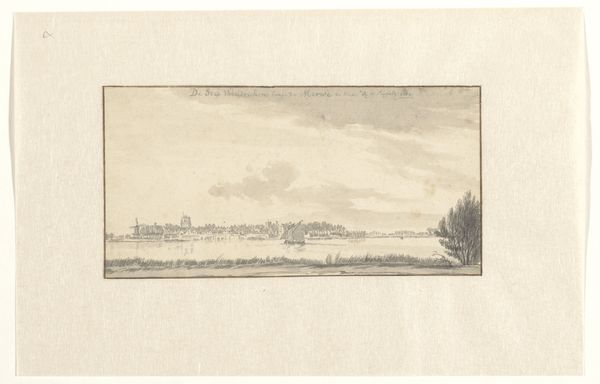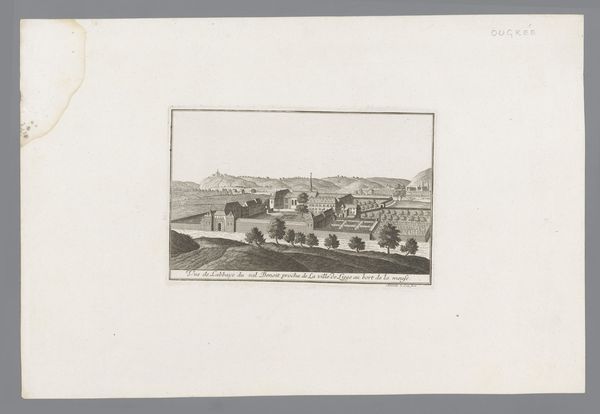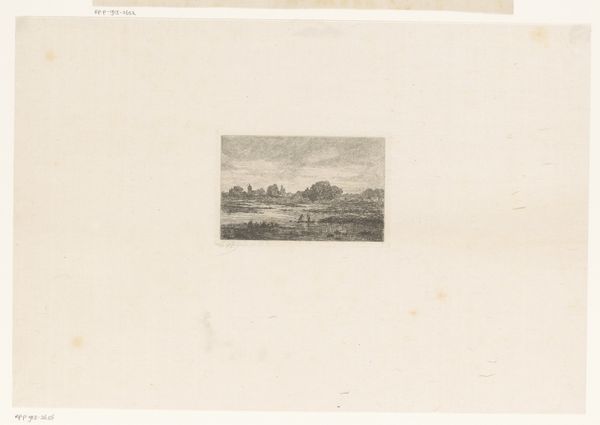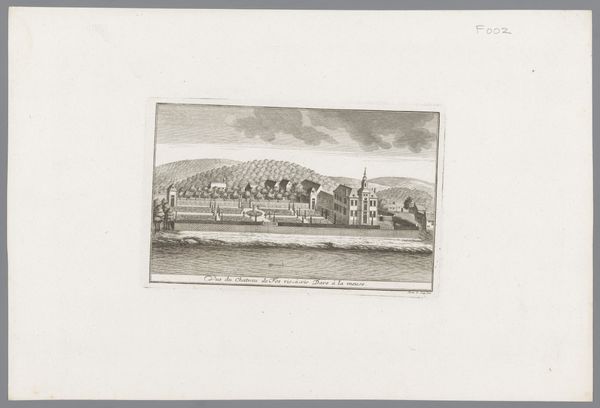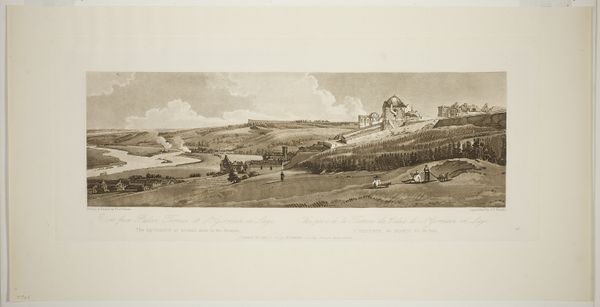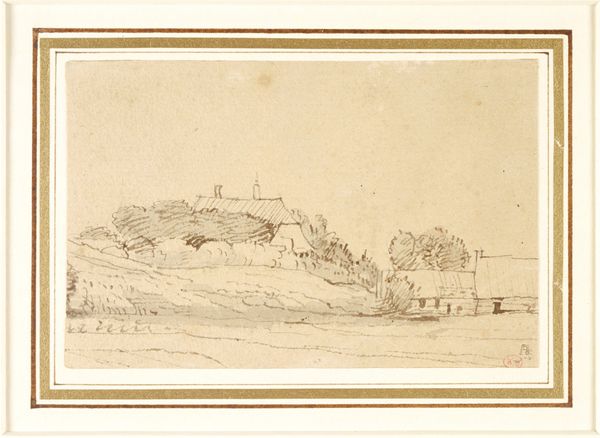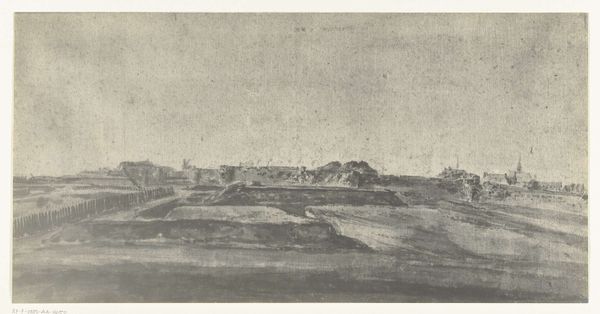
print, etching, engraving
#
neoclacissism
# print
#
etching
#
landscape
#
engraving
Dimensions: height 206 mm, width 263 mm
Copyright: Rijks Museum: Open Domain
Editor: This is "Landhuis van Murat Bey," an engraving and etching made between 1803 and 1805 by Reinier Vinkeles, housed in the Rijksmuseum. It feels like such a formal and staged landscape. What is the context around making and displaying this work? Curator: Well, considering the historical and cultural contexts, this print functions as a tool for constructing a certain image of colonial power. Etchings like this one were circulated amongst European audiences. Do you notice how the Bey's residence is presented? Editor: Yes, it’s distanced, almost like a specimen. The vast, empty foreground separates the viewer from the residence. Curator: Precisely! It emphasizes the landscape as something to be observed and controlled from a distance. What does the architectural style, seemingly a blend of local and European design, suggest to you? Editor: Maybe an attempt to show some kind of assimilation of European tastes within a foreign setting. Curator: Indeed! Consider this artwork as part of a visual propaganda machine, aiming to influence public opinion and further legitimize the colonial project. It transforms cultural difference into picturesque exoticism, and exoticism into an argument for European dominance. Editor: So the purpose isn’t necessarily to faithfully depict the building, but to reinforce a certain narrative? Curator: Absolutely. The ‘Landhuis van Murat Bey’ becomes a symbol, charged with ideological implications, shaped by the institution displaying it and the socio-political forces it represents. Editor: This print provides more insight into European colonial attitudes of the 19th century than the actual building itself. Curator: Exactly. And recognizing that allows us to critically engage with the past and the ways it continues to shape our present.
Comments
No comments
Be the first to comment and join the conversation on the ultimate creative platform.
